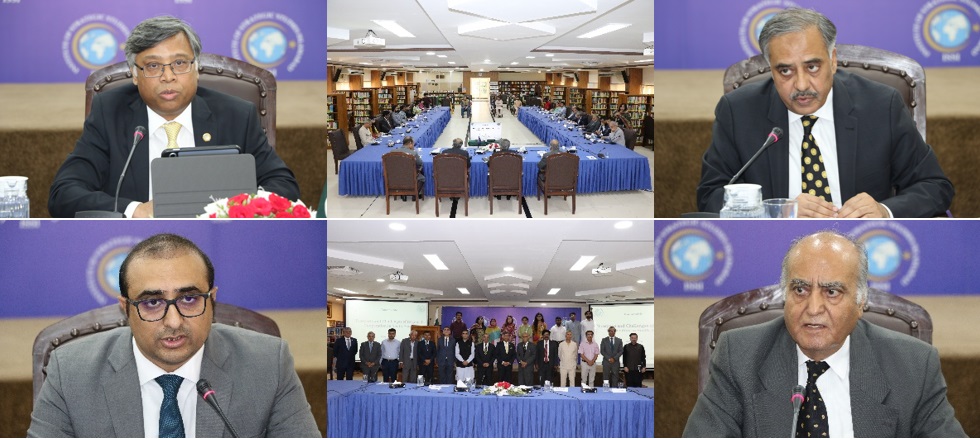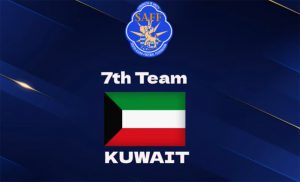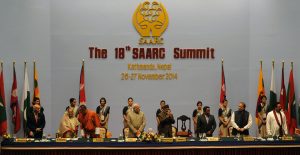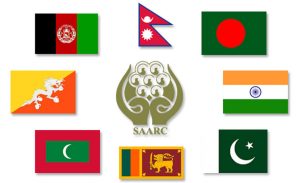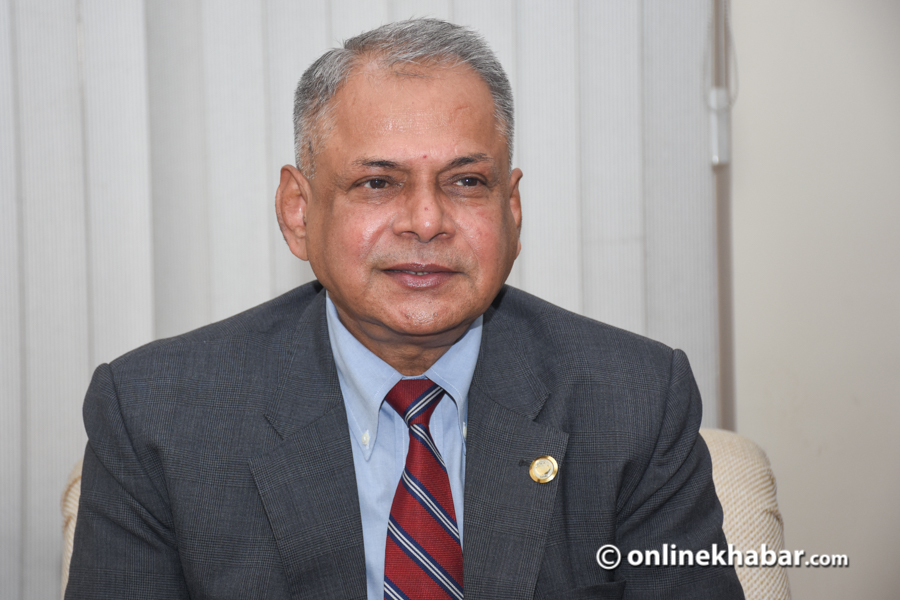
Until a few years ago, the South Asian Association for Regional Cooperation (SAARC) used to make frequent headlines in the Nepali newspapers as the member states including Nepal used to be busy in different activities of the regional body. However, the organisation is less heard in the press these days, apparently due to its failure to hold its summit, the meeting of heads of the states or governments from the member states, since 2014. It seems the organisation is dormant.
In this context, Onlinekhabar recently talked to Amjad Hussain B Sial, the secretary general of the regional body, who is returning his country, Pakistan, next week after completing his three-year term at the SAARC Secretariat in Kathmandu. In the conversation, Sail vehemently rejected the claim that the SAARC is dormant, stating it is not only about the summits.
Excerpts:
How was your stay in Nepal? What did you enjoy here? What did bore you?
My stay in Nepal has been very useful, meaningful and memorable. In my 36 years of my diplomatic career so far, I spent six years in Nepal, as Secretary General of the SAARC from 2017 to 2020 and as a director (representing Pakistan) at the SAARC Secretariat from 2003 to 2006. This country is known for its diplomatic profile, natural beauty and unique culture. It is a founding member of the SAARC and also the host of the SAARC headquarters and SAARC Tuberculosis and HIV/AIDS Centre. Nepal has contributed enormously to the SAARC process. Moreover, Nepali people are friendly and hospitable. I will continue to cherish a happy memory of my assignments in this beautiful country.
What are your next plans ahead? Do they have to do anything with the SAARC?
I do not have any specific plans as such. I will hopefully retire and spend more time with my family. Although my official relationship with the SAARC will end soon, I will always be available for any contribution to its success. As citizens of South Asia, all of us should have faith in the SAARC to promote deeper regional cooperation in the region. Even after my retirement, I will continue to support the SAARC process for promoting the welfare and well-being of the people of this region.
Reviewing your three-year stint, what are recent achievements of the SAARC?
The SAARC is the manifestation of willingness of the countries of South Asia to work together in a spirit of friendship and cooperation to promote peace, stability, amity and progress in the region. It gives me a sense of satisfaction that I have had the opportunity as the Secretary General of SAARC to serve the one-fourth of humanity, living in South Asia.
During my tenure, the SAARC process has made steady progress in agreed priority areas of cooperation. Ten ministerial meetings were held during the past three years, including the three informal meetings of the SAARC Council of Ministers on the sidelines of the United Nations General Assembly in New York. Through these meetings, the member states agreed to take forward collective actions and collaboration in the priority areas. In June 2019, the SAARC agriculture ministers adopted ‘the Thimphu Statement on Agriculture and Rural Development’ to deal with the emerging challenges being faced by the region in agriculture and allied sectors. Similarly, in October 2019, the SAARC education ministers adopted ‘the Malé Statement on Education’ and ‘Education 2030: SAARC Framework for Action’.

Besides, the SAARC’s specialised bodies and regional centres have been actively engaged in promoting regional integration. As one of the specialised bodies of the SAARC, the South Asian University (SAU) is offering higher education for our youth. So far, over 1,000 students have graduated at master’s, MPhil and PhD levels in different disciplines and currently about 600 students are pursuing their higher studies in the SAU. A new campus of the SAU is being built by India on 100 acres of land in New Delhi at a cost of USD 141.7 million.
Another specialised body is the SAARC Development Fund (SDF), which is an umbrella financial institution of the SAARC for its sub-regional and regional projects. It has USD 1.5 billion authorised capital. So far, it has successfully implemented 48 projects and 44 other projects are under implementation.
Other two specialised bodies of the SAARC, namely, the SAARC Arbitration Council in Islamabad and the SAARC Regional Standards Organisation in Dhaka have also been actively pursuing their mandates.
Besides, we have four regional centres working in specialised fields: the SAARC Agriculture Centre in Dhaka, the SAARC Tuberculosis and HIV/AIDS Centre in Kathmandu, the SAARC Energy Centre in Islamabad and the SAARC Cultural Centre in Colombo. A SAARC Supranational Laboratory on TB is being established in the SAARC Tuberculosis and HIV/AIDS Centre in Kathmandu, at a cost of USD 1.07 million. Once established, it will be the first of its kind in the region with state-of-the-art facilities. A new complex of the SAARC Cultural Centre is being built on 17 acres of land at Matara, Sri Lanka, with the contribution of USD 10.5 million from Sri Lanka.
The SAARC Visa Exemption Scheme has a great potential to enhance economic relations and tourism, thereby promoting regional integration. We are working on streamlining the scheme and developing its security software for implementation across the region.
The SAARC also has nine observers, including the EU, and we are working on to initiate project-based substantive collaboration with them in seven priority areas.
Though you listed some impressive successes of the organisation, the critics, overall, say the SAARC is a total failure of late. It has been unable to hold even one summit in the past six years. As the top executive official of the body, how do you respond to these comments?
The holding of the summit is of utmost importance. It provides renewed impetus to the SAARC process. The nineteenth SAARC Summit could so far not be held in Islamabad, Pakistan. As we know, in the SAARC, all decisions are taken unanimously. Therefore, the summit will take place when consensus is evolved among the member states. However, we should remember that 18 SAARC summits have been held.

It may not be appropriate to judge the performance of the SAARC solely on the basis of not holding the nineteenth SAARC Summit. We must not lose sight of the progress that we have achieved and continue to achieve in many projects and proposals that all the member states have agreed on. I am of the view that the SAARC process is moving forward steadily to achieve its objectives as enshrined in the SAARC Charter.
Analysts attribute the failure to hold the summit to the unwillingness of India, the biggest member. Apparently, New Delhi seems to be preferring other consortiums such as the BIMSTEC and the BRICS over the SAARC. Do you agree with this statement?
No, I do not agree.
In accordance with the principles of international law, all member states of the SAARC are equal and they are no big or small. All decisions are taken unanimously according to the SAARC Charter. Referring to your first statement, I wish to underscore that arriving at a consensus is the key to holding a summit. Answering to your second statement, I wish to state that India has been and is an important founding member of the SAARC. It has made valuable contributions to the SAARC process.
Then, how should other members, such as the host of the Secretarial, Nepal, and your own country, Pakistan, work towards ending the deadlock?
As I stated before, the summit will take place when consensus is reached among the member states. I am sure that the member states are working to reach the consensus on holding the next SAARC Summit. The chair of the SAARC (Nepal) has been making efforts for early convening of the summit in Islamabad. Pakistan has been reiterating its offer to host the summit and welcome the leaders of SAARC in Islamabad.
Okay, the summit depends on the political will. It is understandable. What are the other areas that the organisation should prioritise now?
The SAARC represents eight countries in the region that are diverse in terms of size, population, human resource, geography and their levels of socio-economic, industrial and infrastructure development. Some of our countries are landlocked while some are sea-locked islands. Despite these variations, the SAARC can still be an effective vehicle for regional development and prosperity. Similarly, we need to vigorously pursue the objective of attaining better regional connectivity through air, road, rail and sea for promoting regional integration, economic cooperation, trade, tourism and people-to-people contacts.

In this context, I do see the need to finalise early the three important agreements–on motor vehicles, railways and air services–to further improve regional connectivity and integration. More importantly, we need to work more strenuously to be able to deliver dividends of regional cooperation to the common people through project-based collaboration. In the coming decade, we need to work harder to make the SAARC a truly people-centric organisation. We need to work collectively to eradicate poverty, promote education and economic cooperation among the member states. Intra-SAARC trade should also be increased.
But, apparently, there are many problems. If you are asked to recommend solutions to the challenges, what would you say?
Further enhanced regional integration and cooperation among the member states of the SAARC is the only option to overcome the challenges faced by South Asia today. Regular holding of the SAARC summits and other meetings of the charter bodies is of utmost importance to provide renewed political impetus to the SAARC process. Timely and effective implementation of the decisions taken at the national level is another important aspect of making regional cooperative frameworks like the SAARC work effectively.
Finally, what kind of the future is the SAARC approaching?
The SAARC is a beacon of hope for the people in the region. It has the potential to be a vehicle for socio-economic development in South Asia. This is a platform created to promote welfare and wellbeing of the people of this region and in today’s interconnected world, it has greater relevance.
We will have better regional integration and improved connectivity upon implementation of the three agreements I mentioned earlier. It is also earnestly hoped that the vision of the South Asian Economic Union (SAEU) in a phased and planned manner through a free trade area, a customs union, a common market and a common economic and monetary union, as envisaged by our leaders, will be realised soon.






